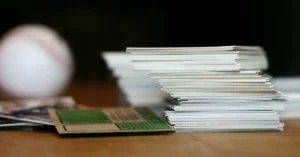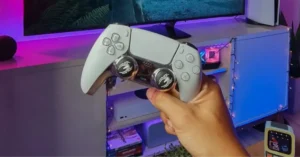Get ready for game time by understanding how long is a high school basketball game. With my expert knowledge, you’ll know exactly what to expect and how to pace yourself for success.
High School Basketball Fundamentals
The basics defined by the National Federation of High School Associations set a standard quality of play that ensures fairness and safety across high school sports.
- Dribbling: It’s essential. You need to have control of the ball at all times. Work on your hand-eye coordination and vary your speed to keep defenders guessing.
- Shooting: A reliable jump shot can make you a valuable part of your team. Practice layups, free throws, and three-pointers to diversify your scoring capability.
- Passing: Basketball is a team sport, and a good pass can be the difference between a win or a loss. Remember, ‘sharing is caring’ in the context of basketball.
- Defensive Skills: A solid defense can shut down the opposition’s best players. Stay light on your feet and be ready to block or steal when the opportunity arises.
You’ll see different levels of play across high school basketball; some players may be future college or even professional stars. Every member of a basketball team should hone their skills in each of these areas, and fundamentals are what can set them apart. Coaches often emphasize the basics because even the most complex play starts with a fundamental skill like a crisp pass or a properly set screen.
How Long is a High School Basketball Game? Game Structure and Scoring

Quarters and Halves
A high school basketball game is typically divided into four quarters, each lasting 8 minutes. A halftime break after the second quarter gives players a chance to rest and strategize.
Overtime Rules
In the event of a tie at the end of regulation time, the game moves into overtime. Overtime periods usually last 4 minutes and continue until one team outscores the other, breaking the tie.
Scoring System
The scoring system in a high school basketball game is straightforward. Points are accumulated through field goals, with 2 points for a regular shot, 3 points for those taken beyond the three-point line, and 1 point for each successful free throw.
Timing and Clock Management

When watching a high school basketball game, understanding how the clock works enhances your experience. The flow of the game is primarily dictated by various timing and clock management rules, which include the duration of the game, the use of the shot clock, and the regulations around timeouts and breaks.
Game Clock
High school basketball games are generally divided into four 8-minute quarters or sometimes two 16-minute halves, depending on the state regulations. The game clock counts down the playing time, and it’s important to note that different levels of play might have slight variations. Clock stoppages occur for various reasons like fouls and ball out-of-bounds, ensuring the game adheres to the intended playing time.
Shot Clock Uses
While the use of a shot clock in high school basketball is not as widespread as in college or professional leagues, some states have adopted it to quicken the pace of play. A shot clock gives your team a set amount of time—typically 30 seconds or less—to attempt a shot, which encourages a more dynamic and engaging game.
Timeouts and Breaks
During a game, you’re allowed to call timeouts, which provide a short break for strategic planning and rest. There are full timeouts (lasting about 1 minute) and 30-second timeouts. The halftime break is usually 10 minutes, giving teams a longer period to rest and regroup. Specific games also feature media timeouts, longer breaks for broadcasting purposes. Timeout periods are crucial for coaches and players to adjust strategies and catch their breath amidst game action.
Rules, Fouls, and Free Throws

Personal and Technical Fouls
When you’re playing basketball, personal fouls involve illegal contact with an opponent while the ball is live. These can include hitting, pushing, or blocking an opponent in a non-permitted manner. On the other hand, technical fouls are violations of basketball conduct, such as unsportsmanlike behavior or illegal game management. Both types of fouls can result in free throws for the opposing team, but they influence the game differently.
- Personal Fouls: Excessive contact with an opponent, such as pushing or hitting.
- Technical Fouls: Non-contact violations relating to player behavior or team conduct.
Free Throw Regulations
The free throw is awarded following certain fouls. Recently, high school basketball adopted a change, eliminating the one-and-one free throw situation. Now, once a team accumulates a specified number of team fouls in a quarter, commonly five, the opposing team is awarded two free throws. This shift aims to simplify the process and improve the game’s pace.
| Free Throws After Team Fouls |
|---|
| Every common foul after reaching the limit of team fouls results in two free throws |
| Team foul count resets after each quarter |
Adapting to these regulations is key for both players and coaches. Being mindful of your team’s foul count every quarter is now more critical than ever, as it can lead to multiple free throws for the opposite team and potentially sway the game’s direction.
Game Flow and Dynamics

When you’re watching a high school basketball game, the pace of play and dynamics are primarily influenced by player substitutions and the halftime break. These elements can affect not only the playing time but also the teams’ overall performance.
Substitutions and Player Rotation
Substitutions are a strategic tool that can alter the flow of the game. You’ll notice that the coaching staff makes decisions on player rotation to give their team a tactical advantage or to give players a rest simply. The ability to bring in a player off the bench provides flexibility and can change the momentum of a game. Each substitution can bring fresh legs to the court, which often boosts the team’s pace of play and allows them to maintain or change their approach.
Halftime Break and Performance
Halftime provides a necessary pause in the game’s action. Not only does it offer a chance for players to rest, but it also allows for coaches to assess performance and adjust strategies. Typically lasting about 10 minutes, this break can be the turning point for a team to revitalize their energy and return with a more robust performance in the second half. It’s also a period when coaches can address any factors affecting their team’s execution, further influencing the second half’s dynamics.
Special Regulations

In high school basketball, it’s essential to understand that specific regulations are in place to promote sportsmanship and maintain the game’s competitive balance. Below are details on the “Mercy Rule” and “Etiquette and Fair Play.” These are not just guidelines; they are rules designed to ensure that every game is fair and enjoyable for all participants.
Mercy Rule
The Mercy Rule is implemented to prevent teams from running up the score in a decidedly one-sided contest. It is not a standard rule across all state high school associations, but where it is in effect if a team is leading by a large margin, usually 30 points or more, by the second half, the clock will continue to run to expedite the end of the game. This helps preserve the integrity of the sport by allowing the game to conclude promptly without unnecessarily prolonging the imbalance in scoring.
Etiquette and Fair Play
Etiquette and fair play are fundamental to high school basketball, setting it apart from professional leagues like the NBA or WNBA, college basketball and FIBA games. These concepts encompass a variety of behaviors:
- Respect for officials and opponents: You should always show respect, even when you disagree with a call.
- Sportsmanship: Win with humility, lose with grace. It’s important to maintain a sportsmanlike demeanor regardless of the game’s outcome.
- Competitive integrity: Teams should play to their best ability during regulation time and avoid tactics that detract from the sport’s competitive nature.
- Fair play: This includes following all rules related to fouls and violations and adhering to substitution procedures and time-out regulations.
FAQ
How many hours do they play basketball?
The amount of time spent playing basketball varies widely depending on factors such as age, level of competition, and individual preferences. Professional basketball players may spend several hours each day practicing and training, while casual players might play for shorter durations.
How many minutes are in a youth basketball game?
In youth basketball, games typically consist of four quarters, each lasting 8-10 minutes, depending on the specific age group and league regulations.
How long does an NBL game take?
NBL (National Basketball League) games typically last around 2 hours, including halftime and stoppages. However, the actual duration may vary based on timeouts, fouls, and overtime periods.
How many people start in a basketball game?
In a standard basketball game, each team starts with five players. These players typically consist of two guards, two forwards, and one center, although specific player positions may vary depending on team strategy and individual skill sets.
If you enjoyed reading about the topic: How Long is a High School Basketball Game, leave a comment and stay updated on Pinterest for more exciting basketball news.
Leave me a comment and make sure to also check out NBA Players Colleges Quiz.





